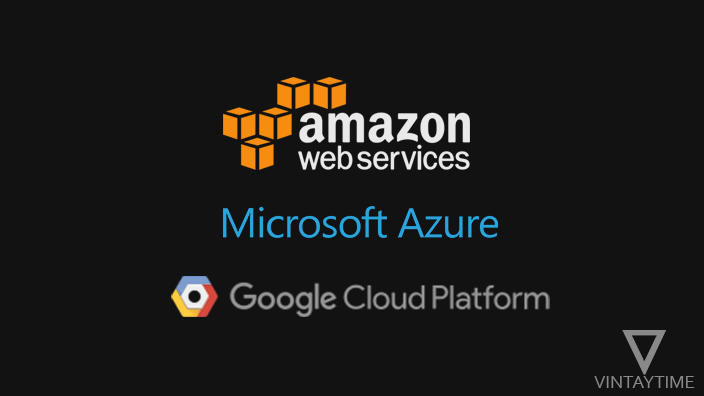Platform as a Service (PaaS) is quickly becoming an essential tool for software developers and IT professionals. It provides a cloud-based hosting platform that allows developers to quickly create, deploy and manage applications. It can also be used to manage databases and other services, providing a powerful and flexible solution. With its multitude of benefits, PaaS is worth exploring in depth. In this article, we will take a look at some of the most popular examples for PaaS, examining their features and capabilities. We will discuss how they can be used to create and manage applications, as well as how they can be used to host databases and other services. Finally, we will look at the advantages and disadvantages of each PaaS option, helping you decide which one is best for your needs.

Exploring the Possibilities: Examining Examples for Platform as a Service (PaaS)
Platform as a Service (PaaS) is quickly becoming an essential tool for software developers and IT professionals. It provides a cloud-based hosting platform that allows developers to quickly create, deploy and manage applications. It can also be used to manage databases and other services, providing a powerful and flexible solution. With its multitude of benefits, PaaS is worth exploring in depth. In this article, we will take a look at some of the most popular examples for PaaS, examining their features and capabilities. We will discuss how they can be used to create and manage applications, as well as how they can be used to host databases and other services. Finally, we will look at the advantages and disadvantages of each PaaS option, helping you decide which one is best for your needs.
Popular Examples for PaaS
When it comes to Platform as a Service (PaaS), there are a few major players in the market. The three most popular examples for PaaS are Amazon Web Services (AWS), Microsoft Azure, and Google App Engine (GAE). Each of these platforms offers a wide range of features and capabilities, making them ideal for a variety of different use cases.
Amazon Web Services (AWS) is a cloud-based hosting platform that provides a wide range of services, including storage, computing, networking, and database services. It is used by many of the world’s leading companies, including Netflix, Airbnb, and Dropbox. AWS offers powerful developer tools, such as Amazon Elastic Beanstalk, that can be used to quickly deploy and manage applications.
Microsoft Azure is a comprehensive cloud computing platform that provides a wide range of services, such as storage, networking, and analytics. It is used by many of the world’s leading companies, including Apple, GE, and Uber. It offers powerful developer tools, such as Azure Functions, that can be used to quickly deploy and manage applications.
Google App Engine (GAE) is a cloud-based hosting platform that provides a wide range of services, such as storage, computing, and database services. It is used by many of the world’s leading companies, including Spotify, Slack, and Airbnb. It offers powerful developer tools, such as App Engine Standard, that can be used to quickly deploy and manage applications.
Features and Capabilities of PaaS
Each of the three major PaaS platforms offers a wide range of features and capabilities. All three platforms provide powerful tools for quickly creating, deploying, and managing applications. They also provide tools for managing databases and other services.
AWS provides a wide range of powerful developer tools, including Amazon Elastic Beanstalk and Amazon EC2. These tools can be used to quickly create, deploy, and manage applications. It also provides a range of storage services, such as Amazon S3 and Amazon Glacier, that can be used to store data.
Microsoft Azure provides a wide range of powerful developer tools, including Azure Functions and Azure DevOps. These tools can be used to quickly create, deploy, and manage applications. It also provides a range of storage services, such as Azure Storage and Azure Database, that can be used to store data.
Google App Engine provides a wide range of powerful developer tools, including App Engine Standard and App Engine Flexible. These tools can be used to quickly create, deploy, and manage applications. It also provides a range of storage services, such as Cloud Storage and Cloud SQL, that can be used to store data.
Creating and Managing Applications with PaaS
All three of the major PaaS platforms offer powerful tools for quickly creating, deploying, and managing applications. These tools can be used to create web applications, mobile applications, and other types of software.
AWS provides a wide range of tools for quickly creating, deploying, and managing applications. These tools include Amazon Elastic Beanstalk, AWS Lambda, and Amazon EC2. These tools can be used to quickly create, deploy, and manage web applications, mobile applications, and other types of software.
Microsoft Azure provides a wide range of tools for quickly creating, deploying, and managing applications. These tools include Azure Functions, Azure DevOps, and Azure Kubernetes Service. These tools can be used to quickly create, deploy, and manage web applications, mobile applications, and other types of software.
Google App Engine provides a wide range of tools for quickly creating, deploying, and managing applications. These tools include App Engine Standard, App Engine Flexible, and Cloud Functions. These tools can be used to quickly create, deploy, and manage web applications, mobile applications, and other types of software.
Hosting Databases and Other Services with PaaS
All three of the major PaaS platforms also offer powerful tools for hosting databases and other services. These services can be used to quickly and easily store, manage, and access data.
AWS provides a wide range of tools for hosting databases and other services. These tools include Amazon RDS and Amazon DynamoDB. These tools can be used to quickly and easily store, manage, and access data.
Microsoft Azure provides a wide range of tools for hosting databases and other services. These tools include Azure Database, Azure Cosmos DB, and Azure Service Fabric. These tools can be used to quickly and easily store, manage, and access data.
Google App Engine provides a wide range of tools for hosting databases and other services. These tools include Cloud Storage, Cloud SQL, and Cloud Datastore. These tools can be used to quickly and easily store, manage, and access data.
Advantages and Disadvantages of PaaS
When it comes to choosing a PaaS platform, it is important to consider the advantages and disadvantages of each one. Each platform offers different features and capabilities, and each one has its own set of pros and cons.
AWS provides a wide range of features and capabilities, but it can be difficult to use for those who are unfamiliar with it. It is also expensive, so it may not be the best option for those on a budget.
Microsoft Azure offers powerful tools for quickly creating, deploying, and managing applications, but it can be difficult to use for those who are unfamiliar with it. It is also expensive, so it may not be the best option for those on a budget.
Google App Engine provides powerful tools for quickly creating, deploying, and managing applications, but it can be difficult to use for those who are unfamiliar with it. It is also expensive, so it may not be the best option for those on a budget.
Benefits of Cloud-Based Solutions
One of the main benefits of using a PaaS platform is the ability to access cloud-based solutions. Cloud-based solutions offer a number of benefits, such as increased scalability, flexibility, and cost savings. They are also easier to maintain, since they require less hardware and less maintenance.
Using a PaaS platform also allows developers to quickly create, deploy, and manage applications, as well as host databases and other services. This can significantly reduce development time and cost, while also improving the performance of applications.
Conclusion
In conclusion, Platform as a Service (PaaS) is quickly becoming an essential tool for software developers and IT professionals. It provides a cloud-based hosting platform that allows developers to quickly create, deploy and manage applications. It can also be used to manage databases and other services, providing a powerful and flexible solution. With its multitude of benefits, PaaS is worth exploring in depth. In this article, we have taken a look at some of the most popular examples for PaaS, examining their features and capabilities. We have discussed how they can be used to create and manage applications, as well as how they can be used to host databases and other services. Finally, we have looked at the advantages and disadvantages of each PaaS option, helping you decide which one is best for your needs.




